
THE
BURMA
SPRING
AUNG SAN SUU KYI AND THE
NEW STRUGGLE FOR THE SOUL OF A NATION
RENA PEDERSON
FOREWORD BY LAURA BUSH

PEGASUS BOOKS
NEW YOR LONDON
THE BURMA SPRING
Pegasus Books LLC
80 Broad Street, 5th Floor
New York, NY 10004
Copyright 2015 by Rena Pederson
Foreword copyright 2015 by Laura Bush
First Pegasus Books cloth edition January 2015
Interior design by Maria Fernandez
All rights reserved. No part of this book may be reproduced in whole or in part without written permission from the publisher, except by reviewers who may quote brief excerpts in connection with a review in a newspaper, magazine, or electronic publication; nor may any part of this book be reproduced, stored in a retrieval system, or transmitted in any form or by any means electronic, mechanical, photocopying, recording, or other, without written permission from the publisher.
The Library of Congress has cataloged the printed edition as follows:
ISBN: 978-1-60598-667-8
ISBN: 978-1-60598-733-0 (e-book)
Distributed by W. W. Norton & Company
To the brave people of Burma
and the hope for a better tomorrow
We are dependent on persons who set examples, persons who can symbolize what we are seeking and mobilize the best in us. Aung San Suu Kyi is just such a person.... Knowing she is there gives us confidence and faith in the power of good.
Nobel Peace Prize Chairman
Francis Sejersted 1991
BY LAURA BUSH
R ena Pedersons story of Nobel Peace Prize winner Aung San Suu Kyi and the people of Burmas struggle for freedom is an important one. I have followed closely, and with optimism, the changes taking place in Myanmar. My inspiration for this concern has always been Daw Aung San Suu Kyi. Her brave leadership gives hope to the men and women of Myanmar, and to freedom lovers worldwide.
In 2006, I convened a roundtable at the United Nations to address the issues of Burmas ethnic conflicts, drug trafficking, and the many thousands of displaced persons. We listened as Burmese activist Hseng Noung described the rape victims in conflict areas. The youngest victim was 8. The oldest was 80. Her words silenced the room.
In 2008, with my daughter Barbara, I visited the remote and crowded refugee camps on the mountainous border between Myanmar and Thailand. There, I saw the tireless efforts of Dr. Cynthia Maung to provide lifesaving medical aid for hundreds of refugees in need. I sat with victims of land mine explosions who had lost legs or feet and were waiting quietly for basic care.
Finally, in 2012, after her long isolation under house arrest had ended, I was able to meet Daw Suu in person as she was honored with the Congressional Gold Medal. Daw Suu is not only a symbol of courage, but she is a woman of tremendous humor, honesty, and grace.
Former Secretary of State Hillary Clinton and I serve as co-chairs of the Suu Foundation. With Daw Suus vision and guidance, the foundation supports education and improved healthcare in Myanmar. The hope that now grows in Myanmar is a tribute to Daw Suu.
Today, through the George W. Bush Institutes Liberty and Leadership Forum, President Bush and I are working with democracy advocates. We hosted a class of young leaders from all faiths and all regions of Myanmar. These young people read the foundational thoughts of John Locke and James Madison, as well as the inspiring speeches of American presidents from Lyndon Johnson to Ronald Reagan to Barack Obama. They visited George Washingtons historic home, Mount Vernon, and watched Fourth of July fireworks light up the sky over our nations capitol.
Now, these young leaders are back home in Myanmar with the challenging new tasks of reform and reconciliation. They will need the help of the world to make sure that Myanmar has more than a veneer of democracy. And our shared hope is that they will find the kind of lasting peace that the Burmese have sought for so long.
I n 1989, Burmas military rulers changed the official English name of the country from the Union of Burma to the Union of Myanmar. And in 2010, they changed it once more to The Republic of the Union of Myanmar.
Some countriesincluding the United States and the United Kingdomcontinued to use the country name Burma because the military government that changed the name to Myanmar had not been elected democratically. Since there is now a quasi-civilian government in place, the growing trend has been to use the Myanmar nomenclature around the world.
Because it was still U.S. State Department policy to continue using the country name Burma at the time of this books writing, that is the term used predominantly here. Myanmar is also used where appropriate.
This is Burma, and it will be quite unlike any land you know about.
Rudyard Kipling, 1898
K nowing Burma is elusive. The names are tricky for Westerners to pronounce. There are dozens of ethnic groups and generals to sort out.
But the human drama begs you: Dont look away. There are saints as well as soldiers at every turn. The sights and sounds are intoxicatingwith an undercurrent of danger.
Under military rule since the 1960s, Burma became a poisoned Shangri-La, a garden of good and evil. For decades, everyone was watched. People disappeared in the night. After the military takeover, Burma became known as a tropical East Berlinthe citizens were walled in and democracy walled out. Most of the country missed the modernity of the 20th century as a succession of generals kept a bamboo curtain around the country. Only recently have they begun to loosen their grip.
Despite its hardships, Burma has retained the otherworldly appeal that Kipling so admired. Away from the bustle of Rangoon and Mandalay, you discover lakes of dream-like blue and quiet villages untouched by time. Giant golden templesEiffel Towers of faithdot the landscape and remind you that Burma is the heartland of Therav da Buddhism, the oldest surviving branch of the teaching of the elders.
da Buddhism, the oldest surviving branch of the teaching of the elders.
Most Burmeseboth men and womenstill wear the traditional wrap-around sarong called a longyi, so they walk with an easy, languid grace. It is said that the Burmese are the most charming oppressed people in the world, and it is true. Their earnest efforts to please (Tea for you?) make it easy to fall under Burmas spell.
Geographically, its a country the size of Texas, but with about twice the population, more than 50 million.
The overall shape of the country is often described as that of a kite with a drooping tail. Or, depending on your sense of poetry, a jagged diamond with a falling teardrop.
Burma is bounded to the west by India, once the Proud Raj of the British Empire. To the north looms the colossus of China. And to the east, theres the free-wheeling marketplace of Thailand. Its a strategically important neighborhood for world powers and the criminal underworldincluding a Golden Triangle, where a major share of the worlds heroin and methamphetamines are produced.
The jagged Himalayas make a forbidding barrier around the upper half of the country. The bottom half opens up to the Bay of Bengal. There are miles of honeymoon-perfect beach that most hotel chains have never seen.
Four mighty rivers run through Burma from north to south: the Irrawaddy, the Salween, the Chindwin, and the Sittang. The great Irrawaddy River arises in Tibet and powers down through Burma for more than a thousand miles to the Andaman Sea, creating harbors for commerce legal and illegal.
Next page
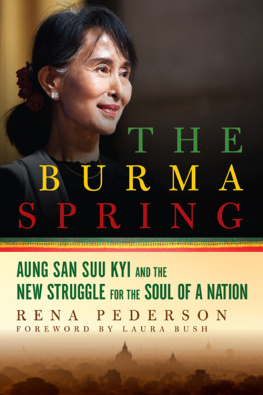
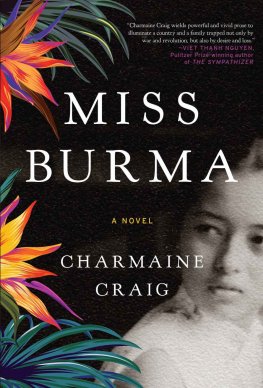
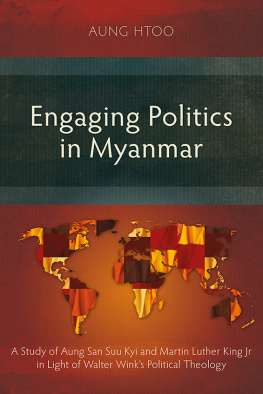

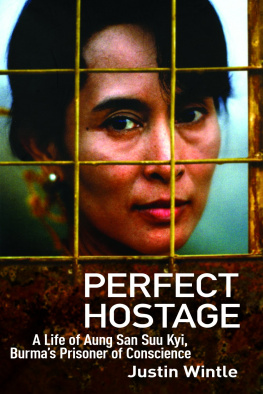
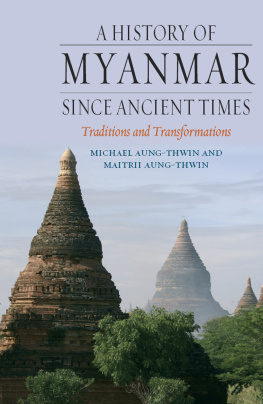
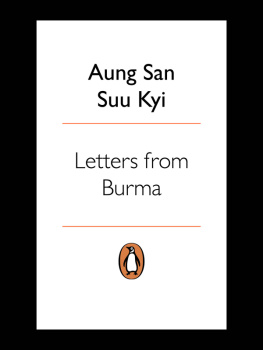



 da Buddhism, the oldest surviving branch of the teaching of the elders.
da Buddhism, the oldest surviving branch of the teaching of the elders.